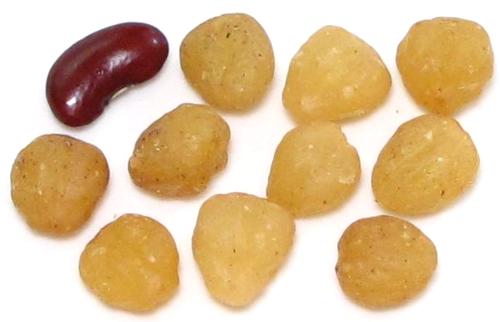 [Djansang, Essessang, Essang, Ezezang, Njasang (Cameroon); Munguella
(Angola); Bofeko (Zaire); Wama (Ghana); Okhuen (Nigeria); Kishongo
(Uganda); Akpi (Côte d'Ivoire); Ricinodendron heudelotii var
heudelotii (Ghana); var africanum (Nigeria)]
[Djansang, Essessang, Essang, Ezezang, Njasang (Cameroon); Munguella
(Angola); Bofeko (Zaire); Wama (Ghana); Okhuen (Nigeria); Kishongo
(Uganda); Akpi (Côte d'Ivoire); Ricinodendron heudelotii var
heudelotii (Ghana); var africanum (Nigeria)]
This large tree, growing to about 160 feet, is native to tropical Africa from Senegal east to Tanzania and south to Angola and Mozambique. It is also found on Madagascar. The part used for food is the seed kernel. The kernels are ground and used as a flavoring thickener. They are also pressed for oil. Both male and female trees must be present to produce fruit. The center for seed kernel production is Cameroon. These seed kernels are used primarily in West Africa and Central Africa.
When the fruit is ripe, it falls from the trees and is gathered from the ground, then left in big piles to rot. When they have rotted, the seeds, about 0.6 inch diameter, are separated out by washing and boiling the fruit. The seeds are then soaked overnight in cold water. They are then boiled again until the shells crack. The shells are removed using a knife, and the seed kernels are set out to dry.
More on Spurges.